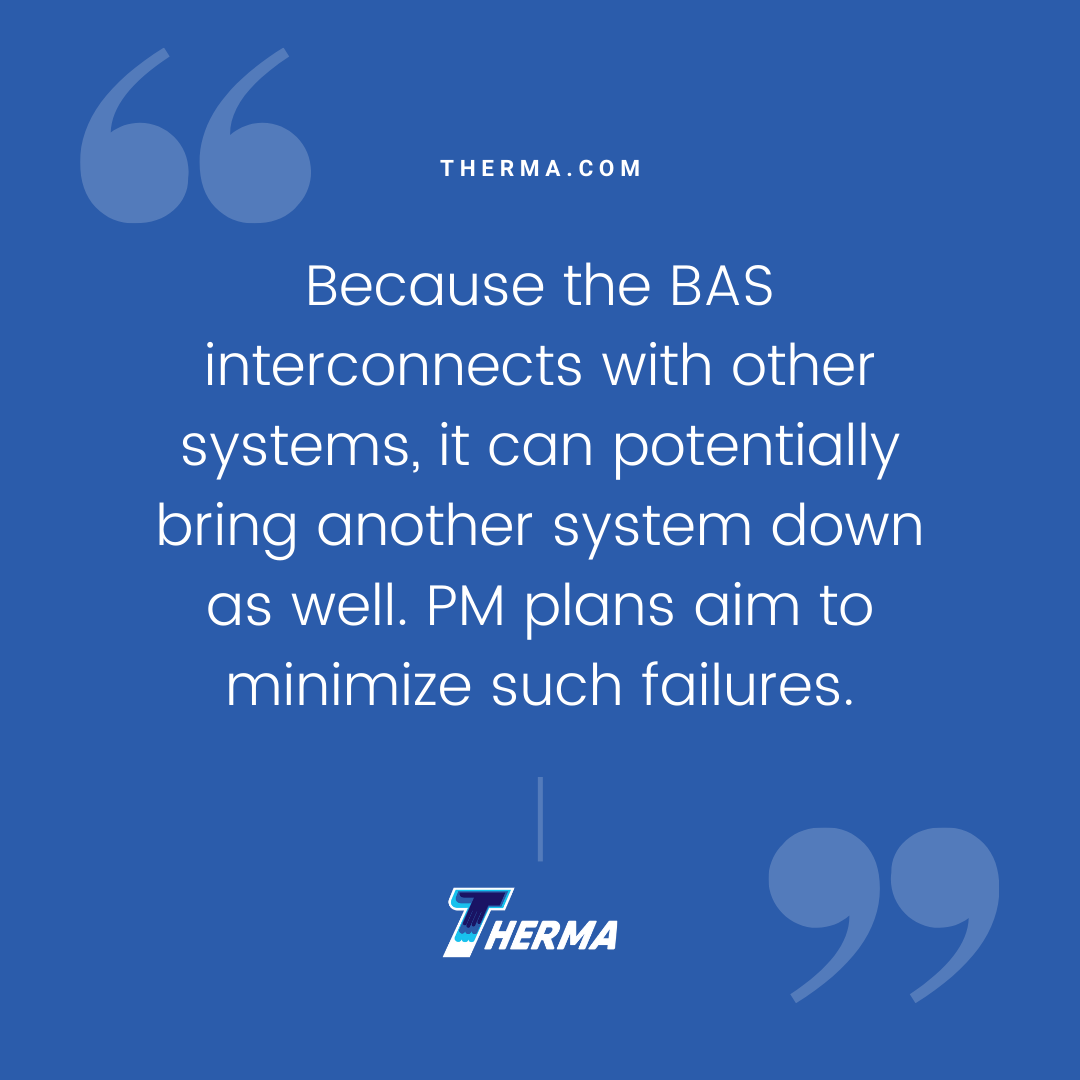by Patti Dees
Preventive maintenance (PM) combats decreasing efficiency and increased energy costs of aging equipment. But time and use also impact systems that managers rely on to automate building subsystems. While building automation systems (BAS) may not come to mind when planning PM, they are well worth including.
Why Bother With PM for BAS?
Scheduled maintenance for systems such as HVAC and plumbing improves equipment reliability and reduces the number of corrective maintenance requests. It is generally cheaper to monitor and repair a piece of equipment than to replace it (and anything else that may have been damaged when it went down). The benefits for PM of these types of systems is clear. However, BAS components may not generate a large volume of corrective maintenance, and occupants and managers both may take their reliability for granted.
A major investment, the BAS is the backbone of building controls. It is the link between equipment for complex building systems and occupant and operator input. The BAS includes computer hardware, monitors, software, sensors, actuators and more. Failures of any of those parts can create extra expenses or hazards. Because the BAS interconnects with other systems, it can potentially bring another system down as well. PM plans aim to minimize such failures.

What Does PM Look Like for BAS?
PM for BAS has a hybrid focus between mechanical and IT requirements. Some tasks cross over into planning for subsystems. For example, managers may include adjusting actuators as part of their PM on HVAC systems. Because of this, a key factor for a successful maintenance plan is collaboration.
The broad-reaching scope of a BAS requires input from a wide array of personnel to adequately cover its different elements as seen in the following examples:
Sensor calibration
A BAS relies on accurate measurements to trigger actions in the field. Recalibration ensures the sensors are reliable.
Confirm setpoints and alarms
As building use and equipment changes, setpoints and alarms need to be reevaluated. Frequently ignored notifications could indicate the need for a review.
Verify that control sequences work as expected
Just as setpoints need periodic review, the sequence of operations triggered by those setpoints may benefit from verification. Certain steps may no longer be necessary or there may be more cost-effective methods for meeting the goal.
Tune control loops
PID control loops degrade over time. An estimated 50% of loops need re-tuning after six months.
Review network security
Cybersecurity and maintenance on a BAS share some crossover. For instance, removing software that is no longer used frees up resources on computer systems, but also doubles as system hardening. For a BAS which allows remote operation, collaborate with IT on current security measures and how BAS access can benefit from them as well.

Computer software and hardware upgrades
Outdated control application software or malfunctioning computer hardware, even individual components, impact the reliability of a BAS.
User interfaces
Improving user interfaces is more than window dressing. It should reflect changes in functionality, ease-of-use, or refinement of tools such as trends and notifications.
Preventative Maintenance for BAS
The goal of total preventive maintenance is getting the most out of your equipment with the least overall costs. BAS benefit from PM as much as any mechanical system. As more buildings include BAS, owners and facility managers can protect their automation investment by including them in their PM plans.
Patti draws on her background as a chemical engineer to share information with readers on technology, manufacturing, and construction.







